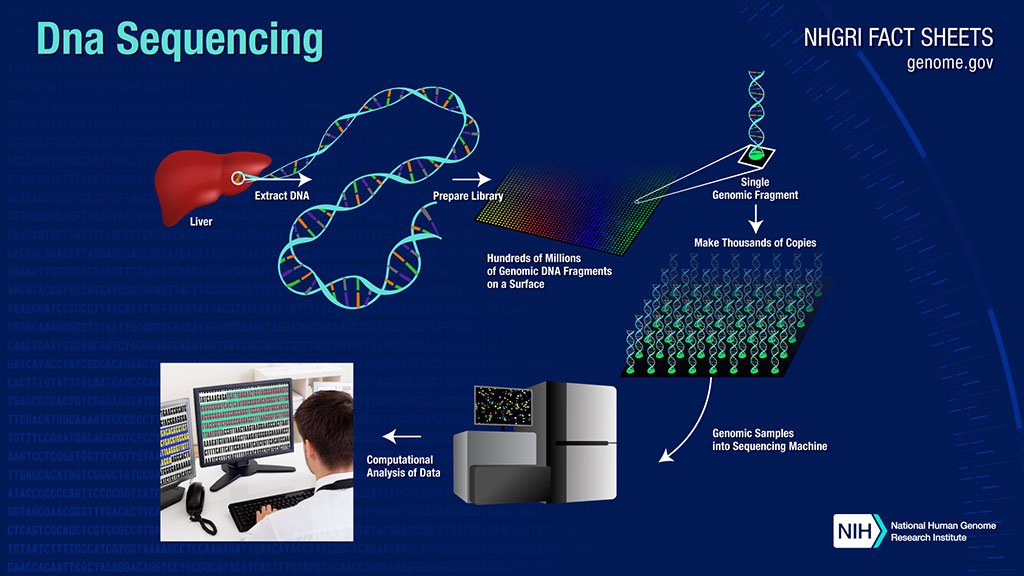Genome Sequencing Investigated for Prenatal Diagnosis of Fetal Structural Anomalies
Posted on 24 Feb 2022
Whole-genome sequencing is a promising alternative to currently used assays to diagnose fetal anomalies, a new analysis has found.
Fetal or congenital structural anomalies can be defined as structural or functional anomalies (for example, metabolic disorders) that occur during intrauterine life and can be identified prenatally, at birth, or sometimes may only be detected later in infancy, such as hearing defects.

Fetal structural anomalies arise in about 3% of pregnancies and can range from mild to severe. While karyotyping, FISH, and array-based approaches have been used to identify genetic causes of fetal anomalies uncovered by ultrasound, sequencing approaches are being adopted or explored to improve diagnostic rates.
Molecular Geneticists at the Mount Sinai Hospital (Toronto, ON, Canada) and their colleagues sequenced the full genomes of a prospective cohort of 37 fetuses with structural anomalies detected by ultrasound, while also performing standard diagnostic testing. DNA samples from the fetuses underwent standard prenatal diagnostic testing. In Canada, the current prenatal diagnostic protocol includes rapid aneuploidy detection, or RAD, by either QF-PCR or FISH to detect aneuploidies of chromosomes 13, 18, 21, X, and Y, followed by microarray analysis. Fetuses negative on those tests are then offered exome sequencing analysis. The 37 fetuses with negative RAD results then underwent singleton genome sequencing.
The scientists reported that for five cases, they identified a pathogenic or likely pathogenic sequence variant that could explain the ultrasound findings and present a molecular diagnosis. This included variants in NIPBL, FOXF1, RERE, and FLT4 as well as in the X-linked gene, AMMECR1. Importantly, Genetic sequencing also identified all pathogenic variants reported by clinical microarray (two copy number variations [CNVs,] 5%). At the same time, they identified seven variants of uncertain significance (VUS), in 19% of samples that could be informative. They noted that one VUS they uncovered was later found through a trio analysis to be a de novo mutation and was reclassified to likely pathogenic.
In all, genome sequencing (GS) had a diagnostic yield of 19%, but the investigators further argued that with the VUS data, whole-genome sequencing provided clinically useful or potentially useful data for 38% of cases. This, they noted, is higher than the 6 % diagnostic yield for chromosomal microarrays and the 8.5% to 10% diagnostic yield reported for exome sequencing after negative RAD and CMA findings.
Abdul Noor, PhD, an Associate Professor, Director of Genetic Diagnostics and senior author of the study, said, “Genome sequencing is now widely used postnatal and it's getting more and more popular. So, we wanted to see how we can utilize it in the prenatal setting, and particularly we were interested in comparing the diagnostic yield to the current standard-of-care tests in our own institution.”
The authors concluded prenatal GS offered diagnoses (sequence variants and CNVs) in 19% of fetuses with structural anomalies. GS has the potential of replacing multiple consecutive tests, including microarray, gene panels, and WES, to provide the most comprehensive analysis in a timely manner necessary for prenatal diagnosis. The study was published on January 28, 2022 in the journal Prenatal Diagnosis.
Related Links:
Mount Sinai Hospital













